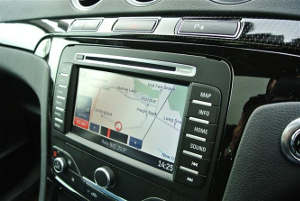Sat Navs Updated To Keep Traffic Away From Residential Roads

Good news is on the way for local neighbourhoods across the UK that have been suffering from drivers using their streets as shortcuts and rat runs. Sat nav companies are updating their software to ensure that residential areas are not used as shortcuts, and instead, drivers will be directed to main roads.
The goal is to end ‘rat running’ in major towns and cities and avoid congestion in streets that were not designed to handle high levels of traffic.
Rat running is when drivers use residential streets and other streets not intended as shortcuts instead of main roads designed to handle larger volumes of traffic.
It is most common during commuting hours, and it can take many forms, such as motorists using residential and smaller roads that run parallel to heavily congested main roads or frontage roads that are actually designed to provide vehicle access to other roads and businesses like motor trade forecourts, garage mechanics, and shops.
Rat running can increase traffic on quieter roads, adding to the potential for accidents involving both motorists and pedestrians, leading to calls to our private and motor trade insurance broker!
Noise and emissions from rat-running vehicles can impact the quality of life for people living in the area, and it might not even save time. In fact, data from TomTom shows that many cut-through routes add to drivers’ journey time.
The negative impacts of rat running can be prevented by closing roads to through traffic using bollards and pavement build outs or changing them to one-way streets. Some measures can deter rather than prevent rat running, including speed bumps, speed cushions, and speed tables.

Roads that are marked ‘access only’ cannot be used as through routes, and breaking this regulation could result in a fine.
Rat running has become more widespread due to the widespread adoption of sat navs. The industry is now making plans to adjust algorithms, with one of the world’s leading sat nav brands, TomTom, stating that it has started conversations with the European Commission over the planned updates.
If approved, the changes could be introduced in Europe, including the UK, by the end of 2026.
According to a report from the former Chief Scientist at the Department for Transport (DfT), David Metz, sat navs slow motorway traffic and lead to congestion. Plans to increase capacity on the M25 and M1 failed as satnavs were redirecting motorists onto the motorway for one or two junctions on short journeys.
If you’re concerned about the traffic coming through your area, the best thing to do is contact your local council to draw their attention to the potential issue.






